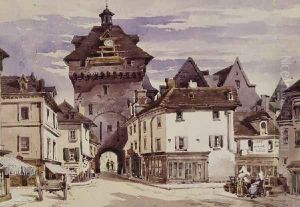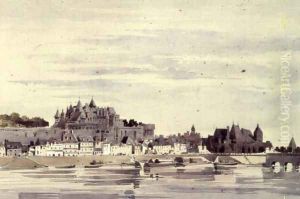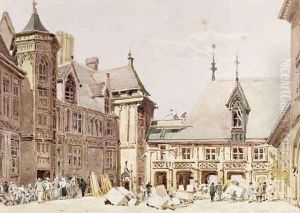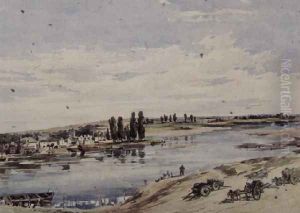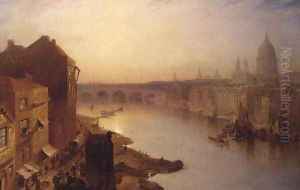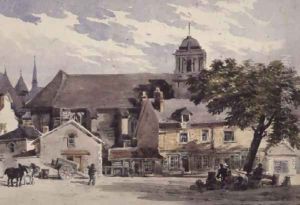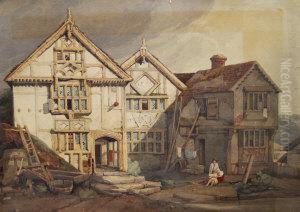Charles Claude Pyne Paintings
Charles Claude Pyne, born in 1801 and passing in 1884, was a British artist whose work primarily focused on landscapes and watercolors. His artistic journey is less documented than some of his contemporaries, making him a somewhat enigmatic figure in the realm of 19th-century British art. However, his contributions, particularly in watercolor, demonstrate a keen eye for detail and a profound appreciation for the natural world.
Pyne's life was marked by the typical struggles and triumphs of an artist in the Victorian era. He was active during a period when the British art scene was undergoing significant transformations, with the rise of romanticism and the increasing popularity of landscape painting. These shifts provided a fertile ground for Pyne's development as an artist. He was known to have been influenced by the works of earlier masters, as well as by his contemporaries, adapting and evolving his style in response to the changing tastes of the art-buying public.
Throughout his career, Charles Claude Pyne exhibited at various prestigious venues, including the Royal Academy and the British Institution. His works were appreciated for their attention to atmospheric effects and the delicate handling of light, capturing the sublime beauty of the British countryside and beyond. Pyne's landscapes often evoke a sense of tranquility and timelessness, inviting the viewer to step into a world untouched by the industrial revolution's rapid changes.
Despite his talent and the quality of his work, Pyne did not achieve the same level of fame as some of his peers. This may be attributed to the highly competitive nature of the art world at the time, as well as the shifting trends that favored other styles and subjects over the course of his career. Nevertheless, Charles Claude Pyne's contributions to British landscape painting continue to be recognized by art historians and collectors, who admire his ability to capture the essence of nature with sensitivity and skill.
After his death in 1884, Pyne's works were somewhat forgotten in the broader narrative of 19th-century art, overshadowed by more prominent figures. However, recent years have seen a renewed interest in his oeuvre, with art historians and enthusiasts alike rediscovering the charm and elegance of his watercolors. Today, Charles Claude Pyne is celebrated as a skilled practitioner of the British watercolor tradition, a testament to the enduring appeal of his vision of the natural world.
